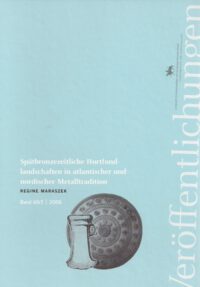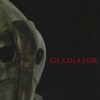Die Helme und Beinscheinen aus der Gladiatorenkaserne Pompejis sind viel mehr als gewöhnliche Schutzwaffen. Ihre herausragende und detailfreudige Verzierung lässt erahnen, in welch prächtigem Kontext die blutigen Spektakel in der Arena einst stattfanden.
Die erstklassigen Aufnahmen des Münchner Fotografen Juraj Lipták laden dazu ein, die Raffinesse dieser weltberühmten Funde aus Pompeji zu erkunden und neue Facetten ihrer Dekoration zu entdecken. Zum ersten Mal werden die pompejanischen Gladiatorenwaffen in ihrem wahren Glanz präsentiert.
The helmets and leg-guards from the gladiatorial barracks of Pompeii are far more than everyday armour. Their outstanding, intricate decorates gives an inkling of the glamorous context in which the bloody arena spectacles once took place. The first-class photography by the Munich-based photographer Juraj Lipták are an invitation to explore the elegance of these world-famous finds from Pompeii and to discover new facets of their decoration. For the first time, the Pompeian gladiatorial armour is here presented in its true splendour.
Inhaltsverzeichnis:
Vorwort der Herausgeber
Editors‘ preface
Gladiatorenkämpfe im Römischen Reich
Gladiatorial Fights in the Roman Empire
Gladiatorenkämpfe in Pompeji
Gladiatorial Fights in Pompeii
Die Bewaffnungstypen (armaturae)
The Types of Arms and Armour (armaturae)
• Thraex
• Murmillo
• Hoplomachus
• Provocator
• Secutor
• Retiarius
ANHANG
APPENDIX
Literaturauswahl / Quellenverzeichnis
Select Bibliography / Sources Cited
Abbildungsnachweis
Picture Credits
Die Gladiatorenwaffen der Ausstellung
• »Pompeji – Nola – Herculaneum. Katastrophen am Vesuv«
The Gladiatorial Armour in the Exhibition
• »Pompeii – Nola – Herculaneum. Disasters at Mount Vesuvius«

 BUFM Band 90: Varia neolithica IX - „Archäologische Defizite – Lösungsansätze aus Bodenkunde und Archäologie“
BUFM Band 90: Varia neolithica IX - „Archäologische Defizite – Lösungsansätze aus Bodenkunde und Archäologie“  BUFM Band 93: LANDwirtschaft – LANDnutzung
BUFM Band 93: LANDwirtschaft – LANDnutzung  Historia in Museo Festschrift zum 65. Geburtstag von Frank-Dietrich Jacob
Historia in Museo Festschrift zum 65. Geburtstag von Frank-Dietrich Jacob  Band 60: Spätbronzezeitliche Hortfundlandschaften in atlandischer und nordischer Metalltradition - 2 Bände
Band 60: Spätbronzezeitliche Hortfundlandschaften in atlandischer und nordischer Metalltradition - 2 Bände  Heft 9: Zwischen Großer Röder und Kleiner Spree
Heft 9: Zwischen Großer Röder und Kleiner Spree  Band 70: Der Markt der Stadt Halle im Mittelalter
Band 70: Der Markt der Stadt Halle im Mittelalter  BFS Band 28 (2015/2016)
BFS Band 28 (2015/2016)  Tagung S-A Band 7: Masken der Vorzeit in Europa (II). Internationale Tagung vom 19. bis 21. November 2010 in Halle (Saale)
Tagung S-A Band 7: Masken der Vorzeit in Europa (II). Internationale Tagung vom 19. bis 21. November 2010 in Halle (Saale) 




